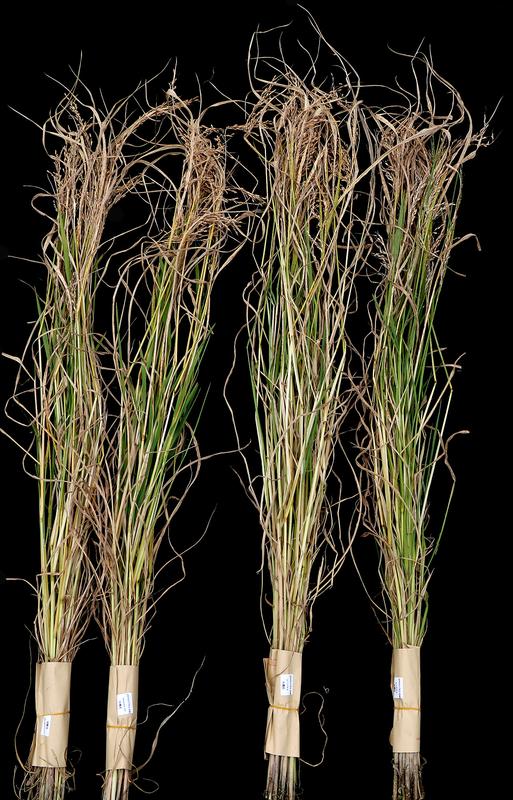Rice Plant Resists Arsenic

Rice plant astol1
Sheng-Kai Sun / Nature Communications
The agricultural cultivation of the staple food of rice harbours the risk of possible contamination with arsenic that can reach the grains following uptake by the roots. In their investigation of over 4,000 variants of rice, a Chinese-German research team under the direction of Prof. Dr Rüdiger Hell from the Centre for Organismal Studies (COS) of Heidelberg University and Prof. Dr Fang-Jie Zhao of Nanjing Agricultural University (China) discovered a plant variant that resists the toxin. Although the plants thrive in arsenic-contaminated fields, the grains contain far less arsenic than other rice plants. At the same time, this variant has an elevated content of the trace element selenium.
The researchers explain that especially in agricultural regions in Asia, increasing amounts of the metalloid arsenic get into the groundwater through large-scale fertilisation or wastewater sludge, for example. Because rice is cultivated in submerged fields, the plants absorb a good deal of arsenic through the roots, thus giving the potential carcinogen a pathway into the food chain. According to Prof. Hell, arsenic pollution in some soils in Asia is now so high that it is also causing significant crop losses because the arsenic is poisonous to the plants themselves.
In the course of their research project, the scientists exposed over 4,000 rice variants to water containing arsenic and then observed their growth. Only one of the plants studied proved to be tolerant against the toxic metalloid. What biologically characterises the rice variant called astol1 is a so-called amino acid exchange in a single protein.
“This protein is part of a sensor complex and controls the formation of the amino acid cysteine, which is an important component in the synthesis of phytochelatins. Plants form these detoxifying substances in response to toxic metals and thus neutralise them,” explains Prof. Hell, who together with his research group at the COS is studying the function of this sensory complex. The neutralised arsenic is stored in the roots of the plant before it reaches the edible rice grains and can endanger humans.
In the field study, astol1 rice grains absorbed one third less arsenic than conventional rice grains that were also exposed to arsenic-contaminated water. The researchers further discovered a 75 percent higher content of the essential trace element selenium, which is involved in the production of thyroid hormones in humans. As for yield, astol1 is just as good as the standard high-yield rice variants, making it especially suitable for agricultural use.
“In future, rice plants like astol1 could be used in arsenic-contaminated regions to feed the population as well as help fight diet-related selenium deficiency,” states Dr Sheng-Kai Sun with optimism. The junior researcher was instrumental in discovering the rice variant during the course of his PhD work at Nanjing Agricultural University. Thanks to a scholarship from the Alexander von Humboldt Foundation, he has been working since last year at the Centre for Organismal Studies in the groups of Prof. Hell and Dr Markus Wirtz to investigate the sensor complex causing the astol1 phenotype.
The basic research into this sensor complex is being funded by the German Research Foundation. The research results were published in the journal “Nature Communications”.
Contact:
Communication und Marketing
Press Office
Phone +49 6221 54-2311
presse@rektorat.uni-heidelberg.de
Wissenschaftliche Ansprechpartner:
Prof. Dr. Rüdiger Hell / Dr. Markus Wirtz
Centre for Organismal Studies Heidelberg
Phone +49 6221 54-6284
ruediger.hell@cos.uni-heidelberg.de
Originalpublikation:
S.K. Sun, X. Xu, Z. Tang, X.Y. Huang, M. Wirtz, R. Hell, F.J. Zhao: A molecular switch in sulfur metabolism to reduce arsenic and enrich selenium in rice grain (2021). Nature Communications, https://doi.org/10.1038/s41467-021-21282-5
Weitere Informationen:
https://www.cos.uni-heidelberg.de/index.php/r.hell?l=_e Hell Research Group
https://www.cos.uni-heidelberg.de/index.php/m.wirtz/main?l=_e Wirtz Research Group
Media Contact
All latest news from the category: Agricultural and Forestry Science
Newest articles

NASA: Mystery of life’s handedness deepens
The mystery of why life uses molecules with specific orientations has deepened with a NASA-funded discovery that RNA — a key molecule thought to have potentially held the instructions for…

What are the effects of historic lithium mining on water quality?
Study reveals low levels of common contaminants but high levels of other elements in waters associated with an abandoned lithium mine. Lithium ore and mining waste from a historic lithium…

Quantum-inspired design boosts efficiency of heat-to-electricity conversion
Rice engineers take unconventional route to improving thermophotovoltaic systems. Researchers at Rice University have found a new way to improve a key element of thermophotovoltaic (TPV) systems, which convert heat…



